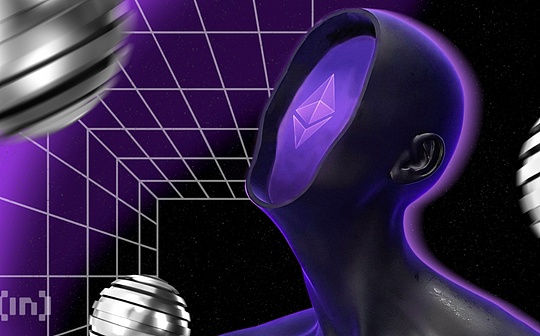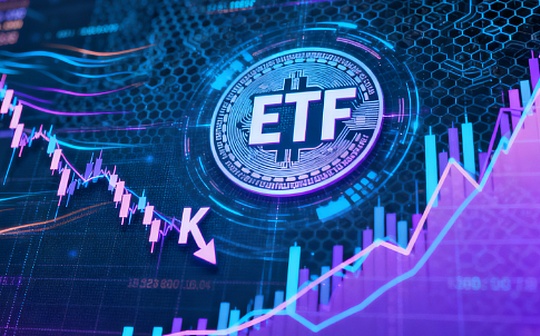
Ethereum returns to L1 narrative, Solana consensus accelerates
Ethereum has begun supply-side reform.
After the Infinite Garden dream shattered, Vitalik restricted L2/Rollup’s favor debt and defended the L1 track with a more positive attitude. The Ethereum main network’s “speed-up and fee reduction” plan was put on the agenda, and turning to Risc-V was just the beginning. How to catch up or even surpass Solana in efficiency will become the highlight of the next thing.
Solana continues to expand the consumer demand scenario.
Solana’s answer is Scale or Die, unswervingly following the path of becoming bigger and stronger L1. In addition to the Firedancer developed by Jump Trading entering the deployment process, at this New York Solana Conference, Anza’s team’s Alpenglow consensus agreement won the first place and attracted the attention of the audience.
Ethereum’s ultimate dream is world computers, by chance, so is Alpenglow.
20% security consensus in the era of large-scale nodes
Starting from Bitcoin, the number of nodes and dispersion are synonyms for measuring the degree of decentralization of blockchain networks. To avoid centralization, the security threshold is limited to 33%, that is, no entity should exceed this proportion.
Driven by capital efficiency, Bitcoin mining eventually moved towards mining pool clusters, and Ethereum became the main stage of Lido and CEX. Of course, this does not mean that mining pools and Lido can control the operation of the network. In the “maintenance network-earning incentives/management fees” model, they have no motivation to do evil.

However, measuring the health of the network must examine its size. For example, in a small group of 3 individuals, 2/3 of them can be called effective operation. It is meaningless to pursue only any 1/3 of the minimum security guarantee. The remaining two are very easy to connect, the cost of doing evil is extremely low, and the benefits of doing evil are extremely high.
If it is a large-scale network of 10,000, if Etherscan gives the existing node scale of Ethereum, there is no need to pursue a majority of votes of 2/3. Outside the incentive model, most nodes do not know each other, and the cost of coordinating the joint evil between Lido and Binance is also too high.
If we reduce the number of nodes and the consensus ratio a little, can we “speed up and reduce fees”?
You should be able to think that Alpenglow also thinks so, and is ready to do it really, maintaining the scale of 1,500 nodes in Solana, and at the same time reducing the security consensus to 20%, which can not only increase the node confirmation speed, earn more mainnet incentives for nodes, but also encourage the expansion of node scale, such as expanding to about 10,000.
Whether it is the effect of 1+1>2 or it will break through the existing security mechanism, it may happen.
But I like it very much. Solana should follow the American chain, conspiracy group, and centralized route, and participate in public chain competition as the opposite side of Ethereum.
Magical modification of Turbine, or toward DPoS
Alpenglow’s theoretical idea is that there is no need for too strong consensus in the era of large-scale nodes, because of the PoS mechanism, evildoers need to mobilize huge amounts of capital to control it. Even at 20% of the scale, based on the current price, Ethereum needs 20 billion US dollars, and Solana also needs 10 billion US dollars.
There is $10 billion, and if you do something bad, you will control the blockchain only when you are crazy, and you will also encounter counterattacks from the remaining 80% of the nodes unless it is a state action.
In specific practice, Alpenglow roughly divides the entire process into three parts: Rotor, Votor and Repair (refer to its paper for more detailed division and workflow), and to a certain extent, Alpenglow is a deep transformation of the Turbine mechanism, so we briefly introduce Turbine.

Turbine is Solana’s Block Propagation mechanism. Simply put, Turbine is a messenger that propagates block information to achieve consensus confirmation for all nodes.
In the early Ethereum design, block broadcasting was the Gossip protocol. The Chinese name is like “rumors, gossip”. Any node can be used as the initial messenger, and P2P communication can be conducted with any node, ultimately achieving the effect of confirmation across the entire network, just like “I have a message, I will only tell you, don’t tell anyone”, and the whole world will know it in the end.
We temporarily skip Turbine and compare it with Ripple’s DPOS mechanism. Ethereum/Bitcoin has achieved the ultimate peer-to-peer communication. So what is the price?
It is extremely slow and expensive, which is easy to understand. Although aimless and random pairing between nodes will be more robust and more censor-resistant, it will take longer. The cost is the consideration of node cost, because other nodes have slow information spread and have to maintain their own operation, so they naturally have to pass on to users in the form of Gas Fee.
Extreme decentralization will inevitably lead to expensive and slow companion diseases.
Ripple’s DPOS is heading to another extreme. In the early days, only 21 super nodes were set up on the entire network. Extreme centralization completely solved any side effects. Now there are 179 main network nodes.
Turbine is moving towards an intermediate state, neither adopting Ethereum’s Gossip mechanism nor towards the evil path of reducing the number of nodes, but rather spreading network nodes in a hierarchical manner:
-
1. In each cycle, the nodes are divided into Leader, Relay and more ordinary nodes. Only Leader nodes can send block broadcast information.
-
2. A small number of Relay nodes continue to broadcast to more ordinary nodes after receiving information. The above process is called Turbine Tree, which is very similar to a tree, with clear primary and secondary.
In Alpenglow, a variant of this protocol is called Rotor, which is essentially an orderly propagating block messages. Any leader and Relay nodes are not fixed.
Votor is a node confirmation mechanism. For example, in Alpenglow’s vision, if the first round of node voting reaches 80%, and if the minimum limit is more than 20%, it can be passed directly and quickly. If the first round of voting is higher than 60% and lower than 80%, the second round of voting can be started, and if it exceeds 60% again, it can be confirmed.
If it doesn’t work, then follow the Repair mechanism, but I personally feel that this is similar to Optimistic Rollup’s challenge period. If you really get to this point, the agreement will be over. FDIC can’t stop the bank run in Silicon Valley banks.
Unlike Bandwidth, software and hardware resources for brute force heaps, Alpenglow’s starting point is to reduce the block consensus generation process.
If the data block is as small as possible, for example, limited to the current 1500 Bytes, the generation time is short enough, for example, in the current test,The extreme situation can reach 100ms, which is 1% of the current 10s.(1 s=1000 ms, but this is doubtful, it is really practical on a large scale, the conditions are not so ideal, but it is also very scary).
Conclusion
After MegaETH, the existing L2 basic volume reaches the end point. After SVM L2 will not receive Solana support, the Solana mainnet has actual demand for continued expansion. Only when the mainnet TPS overwhelms all competition can the concept of Solana Ethereum killer be implemented to the end.
Alpenglow is not only applicable to Solana. In theory, any PoS chain, including Ethereum, can use its mechanism. Similar to the Optimum we introduced earlier, existing blockchain research has reached the edge of technology and urgently needs more help from computer science and even sociological concepts.
IBM once claimed that the world only needs five mainframes in the future. If the Internet composed of HTTP-TCP/IP is one, BTC is one, and Ethereum is one, then there is not much room left for Solana.








